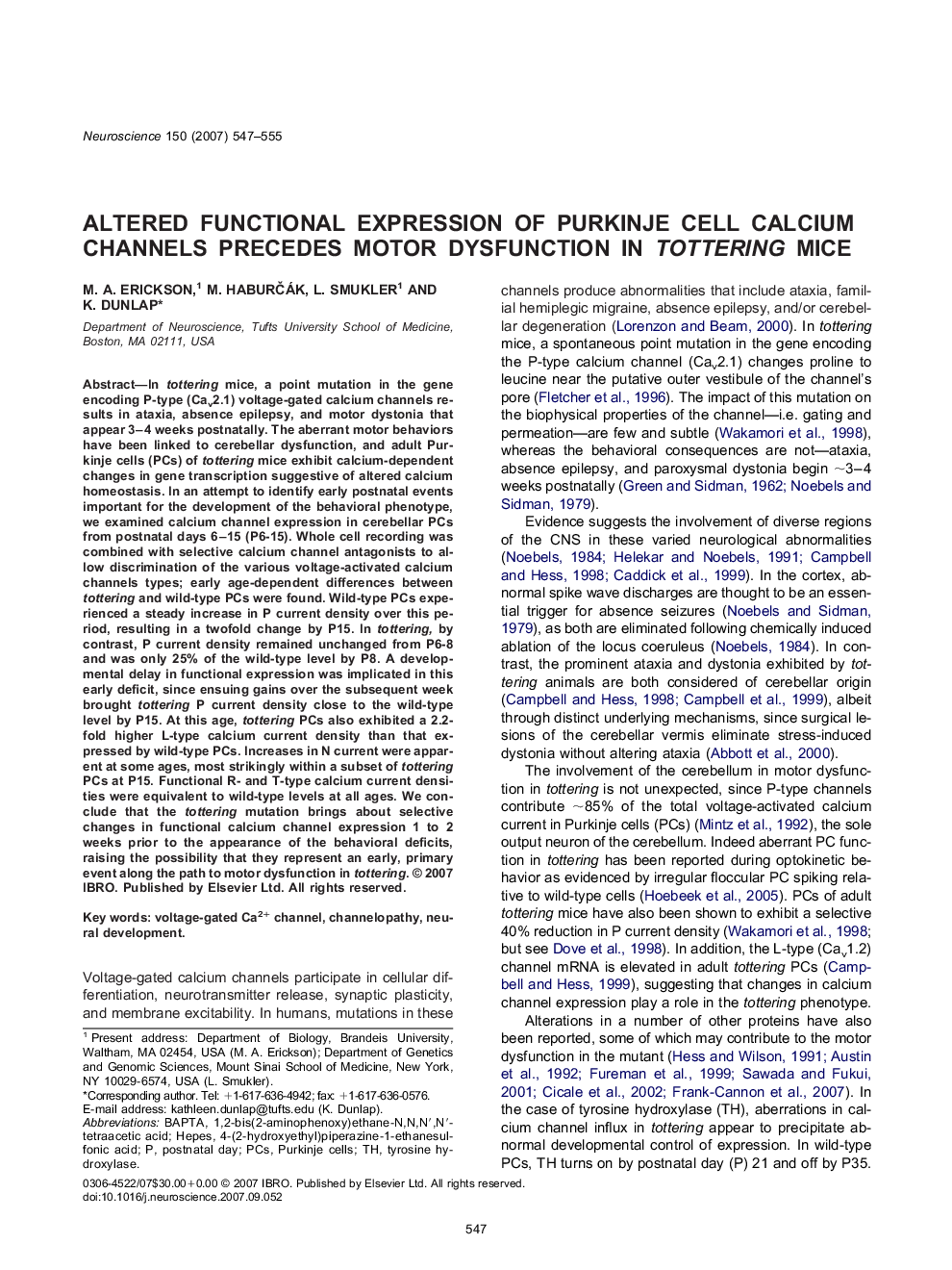| Article ID | Journal | Published Year | Pages | File Type |
|---|---|---|---|---|
| 4340942 | Neuroscience | 2007 | 9 Pages |
In tottering mice, a point mutation in the gene encoding P-type (Cav2.1) voltage-gated calcium channels results in ataxia, absence epilepsy, and motor dystonia that appear 3–4 weeks postnatally. The aberrant motor behaviors have been linked to cerebellar dysfunction, and adult Purkinje cells (PCs) of tottering mice exhibit calcium-dependent changes in gene transcription suggestive of altered calcium homeostasis. In an attempt to identify early postnatal events important for the development of the behavioral phenotype, we examined calcium channel expression in cerebellar PCs from postnatal days 6–15 (P6-15). Whole cell recording was combined with selective calcium channel antagonists to allow discrimination of the various voltage-activated calcium channels types; early age-dependent differences between tottering and wild-type PCs were found. Wild-type PCs experienced a steady increase in P current density over this period, resulting in a twofold change by P15. In tottering, by contrast, P current density remained unchanged from P6-8 and was only 25% of the wild-type level by P8. A developmental delay in functional expression was implicated in this early deficit, since ensuing gains over the subsequent week brought tottering P current density close to the wild-type level by P15. At this age, tottering PCs also exhibited a 2.2-fold higher L-type calcium current density than that expressed by wild-type PCs. Increases in N current were apparent at some ages, most strikingly within a subset of tottering PCs at P15. Functional R- and T-type calcium current densities were equivalent to wild-type levels at all ages. We conclude that the tottering mutation brings about selective changes in functional calcium channel expression 1 to 2 weeks prior to the appearance of the behavioral deficits, raising the possibility that they represent an early, primary event along the path to motor dysfunction in tottering.
